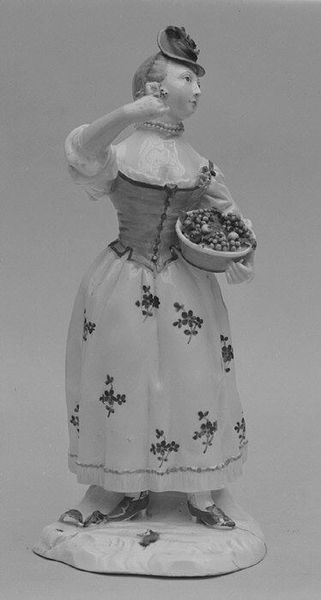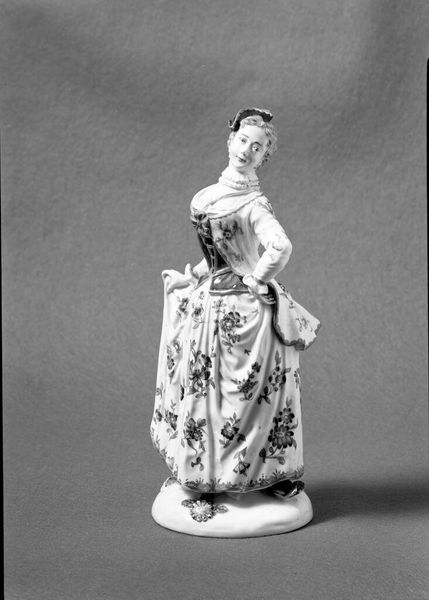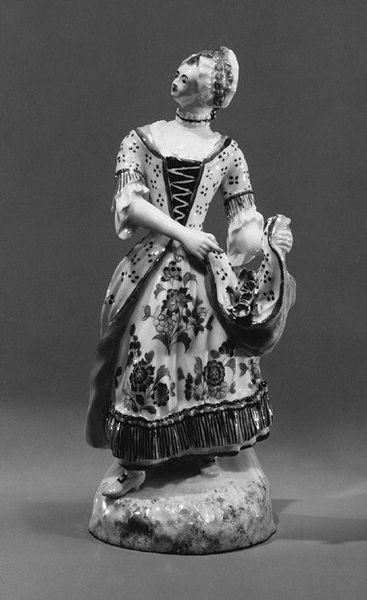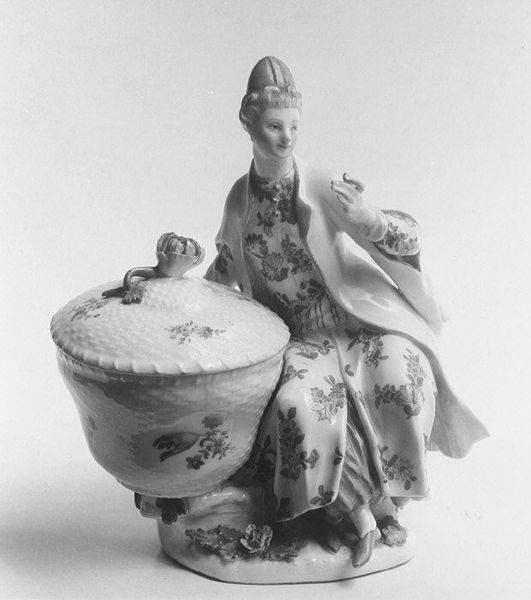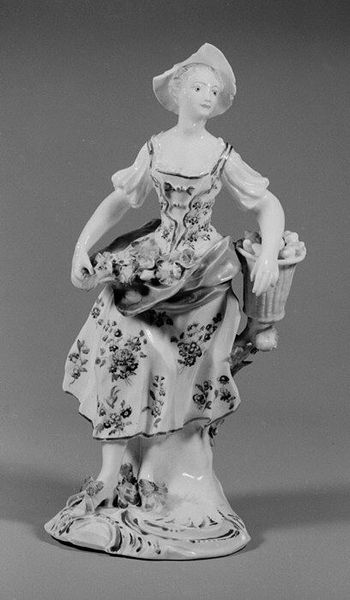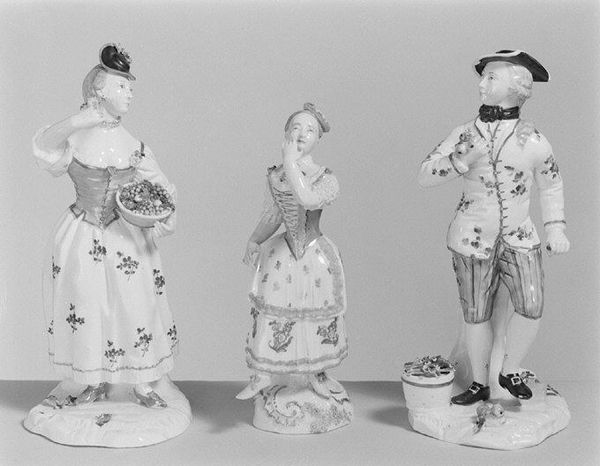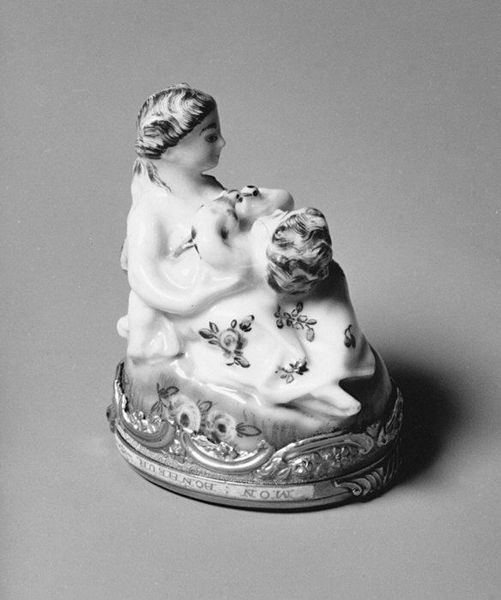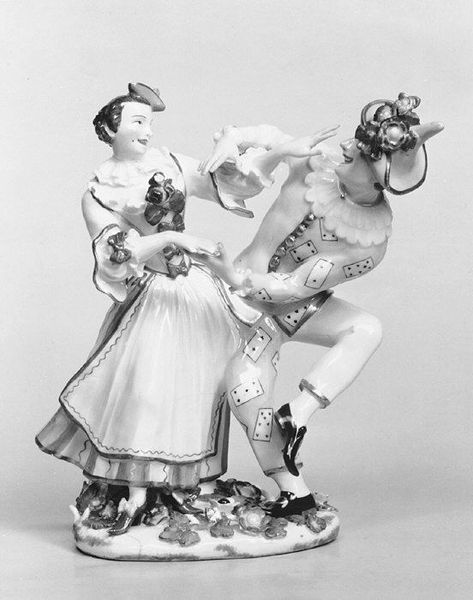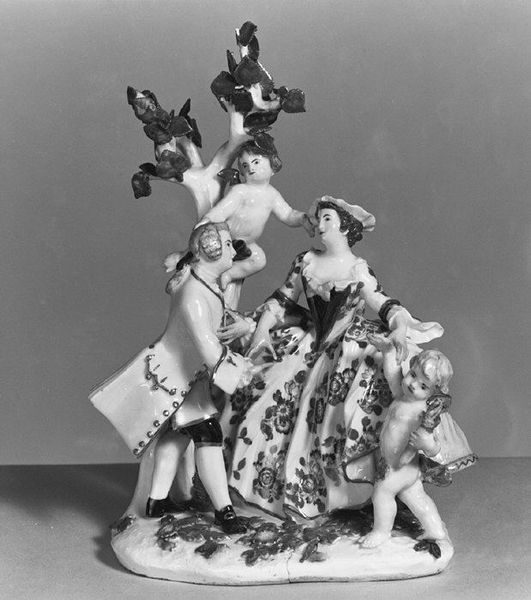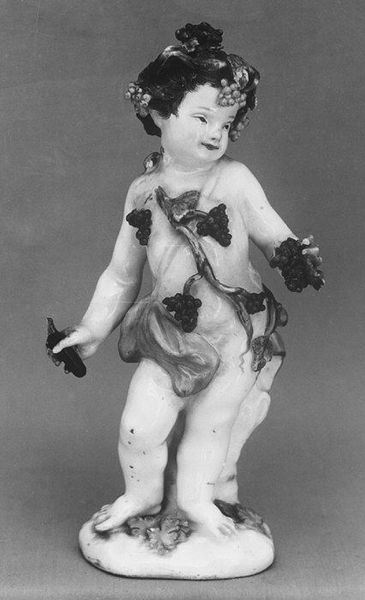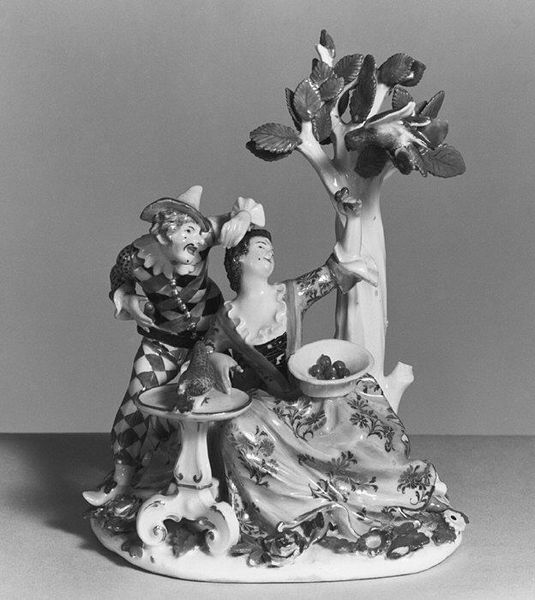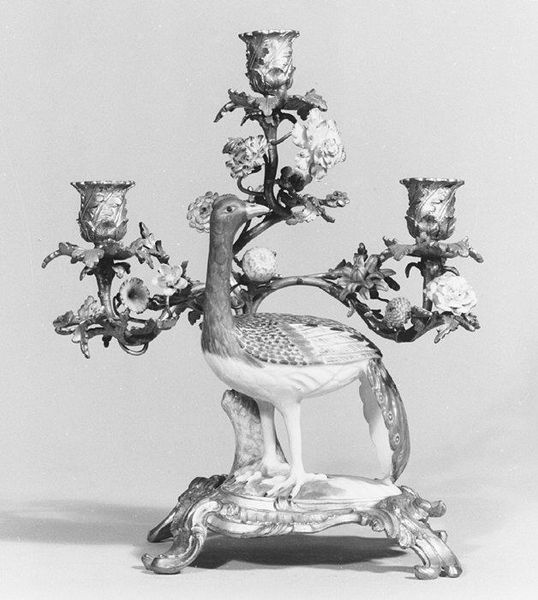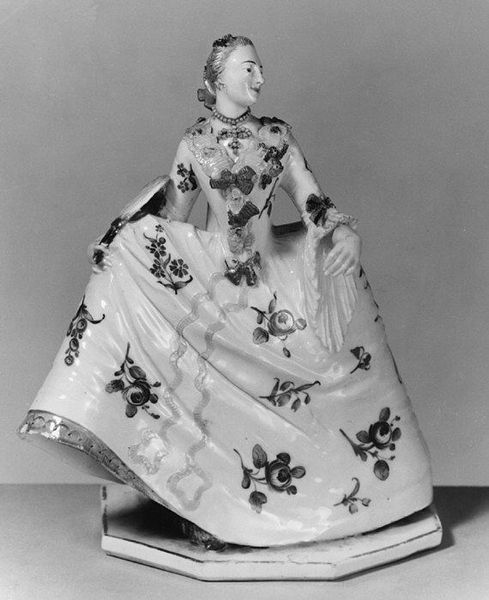
ceramic, porcelain, sculpture
#
3d sculpting
#
mother
#
3d printed part
#
sculpture
#
ceramic
#
jewelry design
#
porcelain
#
structure design
#
sculptural image
#
b w
#
black and white theme
#
child
#
sculpture
#
black and white
#
decorative-art
#
cartoon theme
Dimensions: Height: 8 13/16 in. (22.4 cm)
Copyright: Public Domain
Curator: Here we have "Mother and child group," a porcelain sculpture crafted around 1750-1755 by the Derby Porcelain Manufactory. It resides here at the Metropolitan Museum of Art. Editor: It’s stark, almost ghostly in this monochrome photo. I'm immediately struck by the material; porcelain feels delicate, almost contradictory to the intensity of motherhood it's portraying. Curator: Absolutely. Considering its time, this sculpture opens avenues for understanding the evolving representation of motherhood in 18th-century society. We see a mother, not just as a Madonna-like figure, but perhaps grappling with more earthly realities. The stylized figures, however, invite us to examine the societal expectations placed upon women of the time. How were their roles perceived? How much agency did they possess? Editor: Right, but also how does the material play into this idealized, almost brittle view? Porcelain itself was a prized commodity, demanding immense skill and specialized labor. Think about the craftspeople, the hierarchy in the manufactory, and the very class dynamics embedded in its production. This wasn’t simply an image of mother and child; it was a manufactured luxury good. Curator: That's a keen observation. And if we unpack this idea of production further, consider the decorative arts' historical relegation to the "lesser" arts. We see in feminist art history attempts to redress these hierarchies by championing craft as a vital site for women's artistic expression and a powerful avenue for resisting dominant artistic narratives. Editor: Exactly! Looking at the detailing on the garments, the applied decorations. This challenges this dichotomy. Who were these designers and artisans adding such touches and their specific labor conditions. Considering production really does challenge who has been written into the story. Curator: These nuances certainly encourage us to engage with the intersectionality of the art world and reflect on historical narratives of value and visibility, particularly surrounding marginalized communities and identities within the art ecosystem. Editor: Indeed, porcelain provides a tangible, almost forensic, lens for exploring labour and social stratification, prompting reconsideration about the manufacturing conditions that created this beautiful object.
Comments
No comments
Be the first to comment and join the conversation on the ultimate creative platform.
